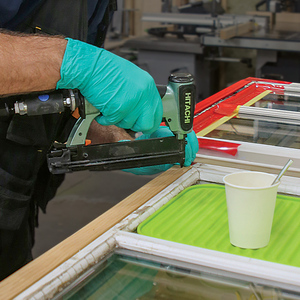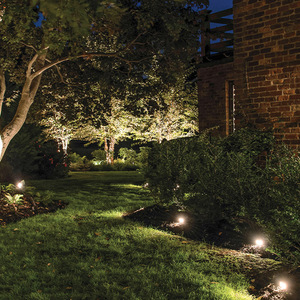I just had a scary situation happen tonight. The wife was using one of the outlets in the kitchen that I installed 3 years ago. I happened by and noted a burning plastic smell, saw brown soot staining on the outlet cover. After quickly tripping the breaker, I pulled the recepticle and inspected it. This was a spec grade 20A Leviton unit with the back wiring feature (not the cheapo type, the one where you insert the wire and tighten the screw from the side). The plastic at the neutral wire connection was melted and the screw was loose. I’m usually very careful to tighten these screws and then double check them before installing the recepticle. Maybe I forgot, but maybe it was loose because all the plastic around it was melted away.
My question, do these things ever just go bad, or was it more likely I caused the problem by not tightening the screw enough? Do the screws ever come loose on this type recepticle on their own? I’m reluctant to replace with a back wired unit, I may return to using side wired units. They take longer to install, but I’ve never had a problem with one.
Thanks, Conrad



















Replies
I have not used any backwire outlets, except GFCI, which have the screw mechanism you describe. I believe it is possible to insert the wire "behind" part of the metal clamp, and then tighten the screw down so it feels like it is clamping down, but the wire isn't actually in between the area it should be. Is it possible you did this accidentally?
I think you nailed the cause of this problem - wire missed the clamp.
Screw will tighten up just fine with no wire held in the jaws of the clamp!
That's why I yank on each wire after tightening the screw - probably just a left over habit from USCG solderless crimp connector testing.
Not a bad habit to have, or even cultivate.............
Jim
Never underestimate the value of a sharp pencil or good light.
Edited 11/30/2008 8:40 pm ET by JTC1
Electrical fires are nearly always loose connections. Think of it like a mini arc welder, never drawing amps to trip a breaker but will generate alot of heat.
The deteriorization can take years to come to the point where it smokes the house. Two instances for me were, first, a fifty+ year old receptacle that a neighbor noticed was "hot". Inspection revealed a loose screw on the neutral wire with the receptacle being somewhere in the middle of an active line, ie, an appliance regularly but intermittantly drawing current downline.
The second was a jackleg receptacle addition which placed two wires under one side screw of an original installation. The insulation on the wire was melted off about 3" from the screw and I did burn my hand on the receptacle when I found it. Again, the homeowner noticed a strange smell and had the prescence of mind to call for help. This electrical work had been done over 20 years ago.
Taking the time to give that screw a little extra torque in the older, original installation would probably have prevented the arcing and the eventual escalation into a hazardous condition.
The second problem was directly the result of a jackleg electrical moron.
Those backwired receptacles are extremely reliable and you should continue to use them, with a little more care. Insert the wire into the correct side of the clamping plate, apply extra torque to the screw and then tug on the wire to be sure.
Many times when something like this happens it turns out to be a bad connection between the plug blade and the socket wipers. Did you inspect the plug to see if there were signs of arcing on the blades?
"I'm usually very careful to tighten these screws and then double check them before installing the recepticle. Maybe I forgot, but maybe it was loose because all the plastic around it was melted away."
Are you saying that you think the wire was not stripped far enough and the insulation was pinched in the back-wire connection? I could see how that could feel like a tight connection initially but leave the actual wire connection gapped and arcing.
kitchen outlets are supposed to be GFI'd, iether at the panel or the recepticle, depending on your location ...
That's recent code. Didn't used to be.
The mark of the immature man is that he wants to die nobly for a cause, while the mark of a mature man is that he wants to live humbly for one. --Wilhelm Stekel
I never considered that the wire could have failed to go between the two plates, so I possibly could have tightened down on the screw but failed to actually engage the wire. It definitely wasn't due to insufficient insulation stripped off; I always strip the length indicated on the gage on the back of the recepticle and insert the wire only until the insulation buts against the back of the recepticle. This wasn't a GFCI outlet because the circuit breaker is GFCI. From now on, I'll take extra care to tug on each wire to ensure it was captured by the plates in the recepticle.